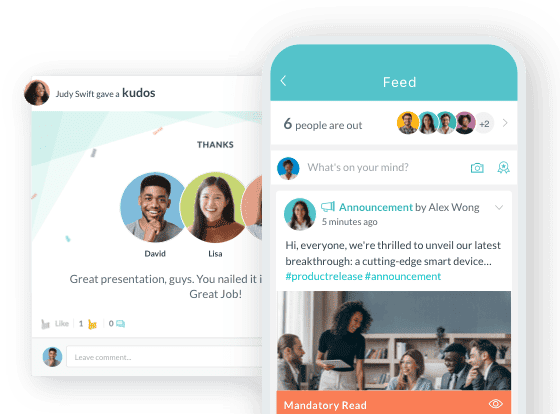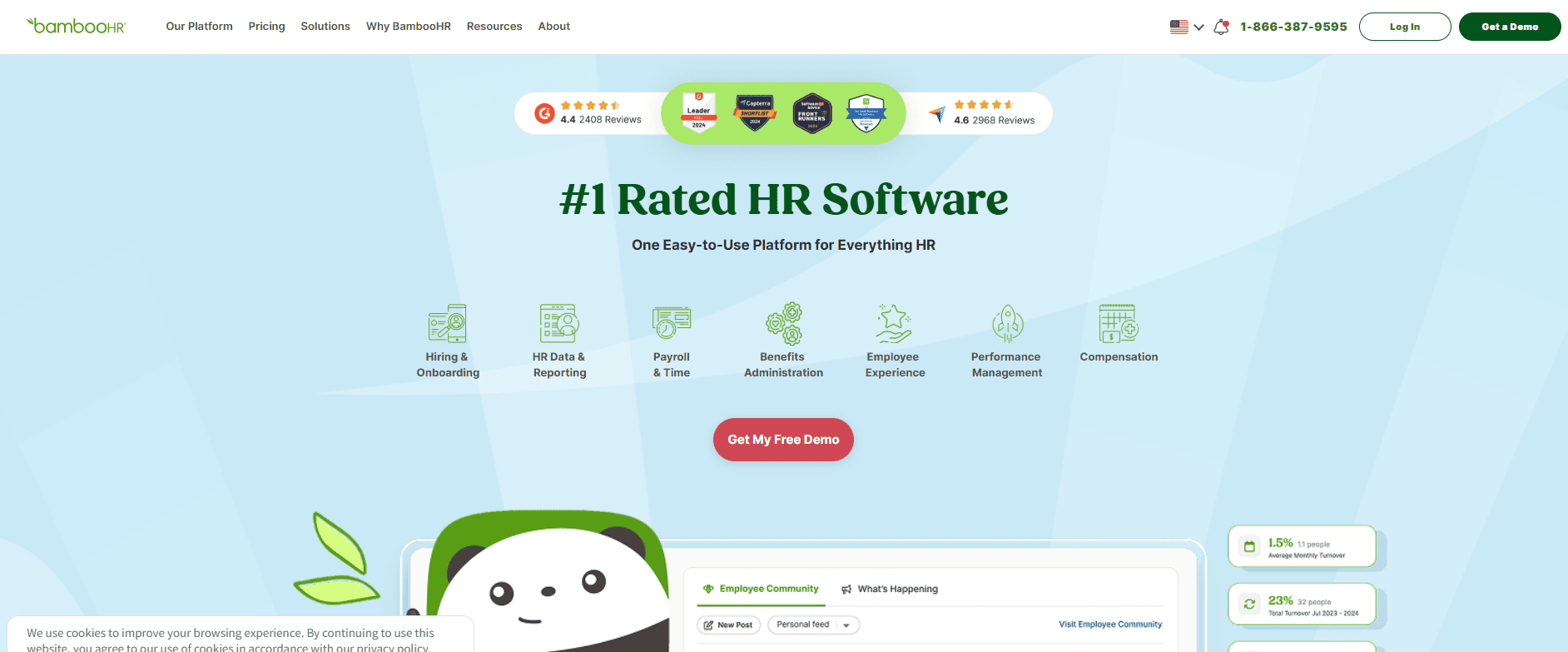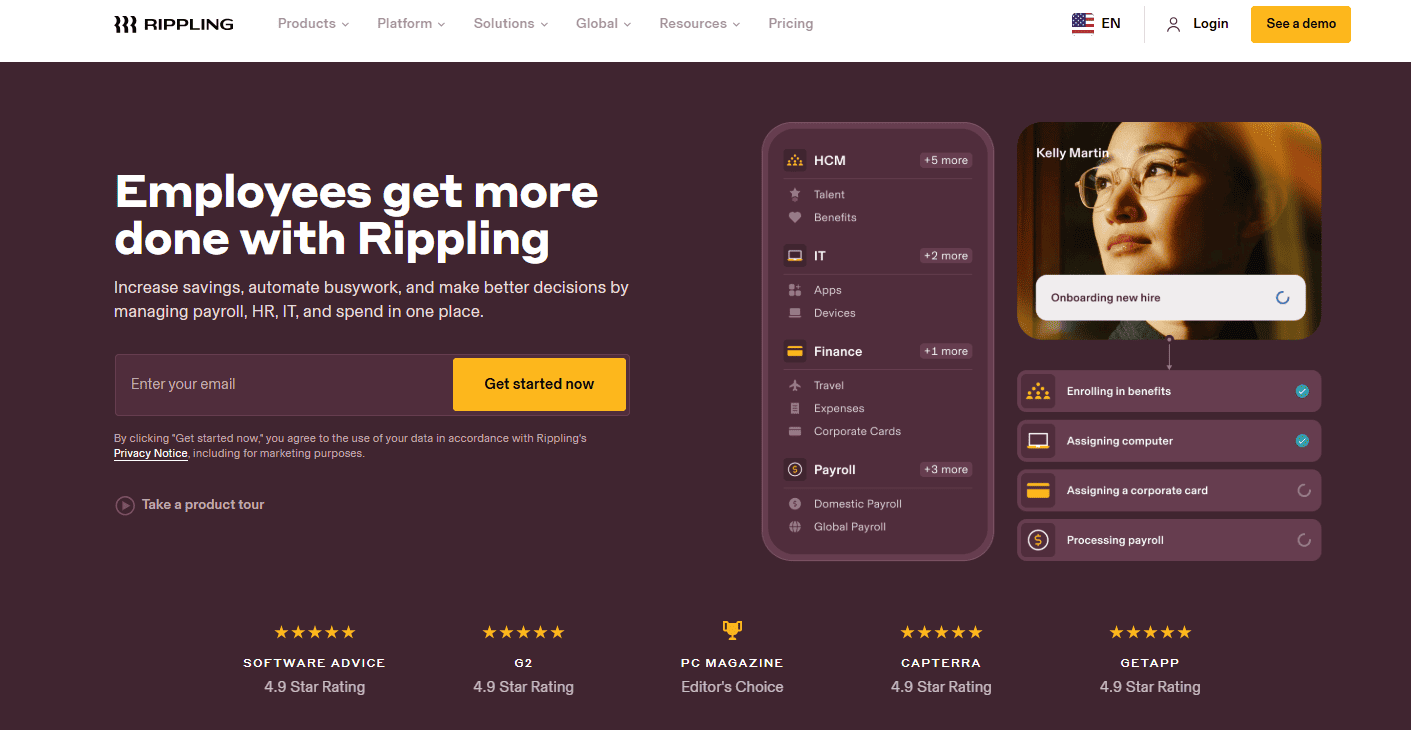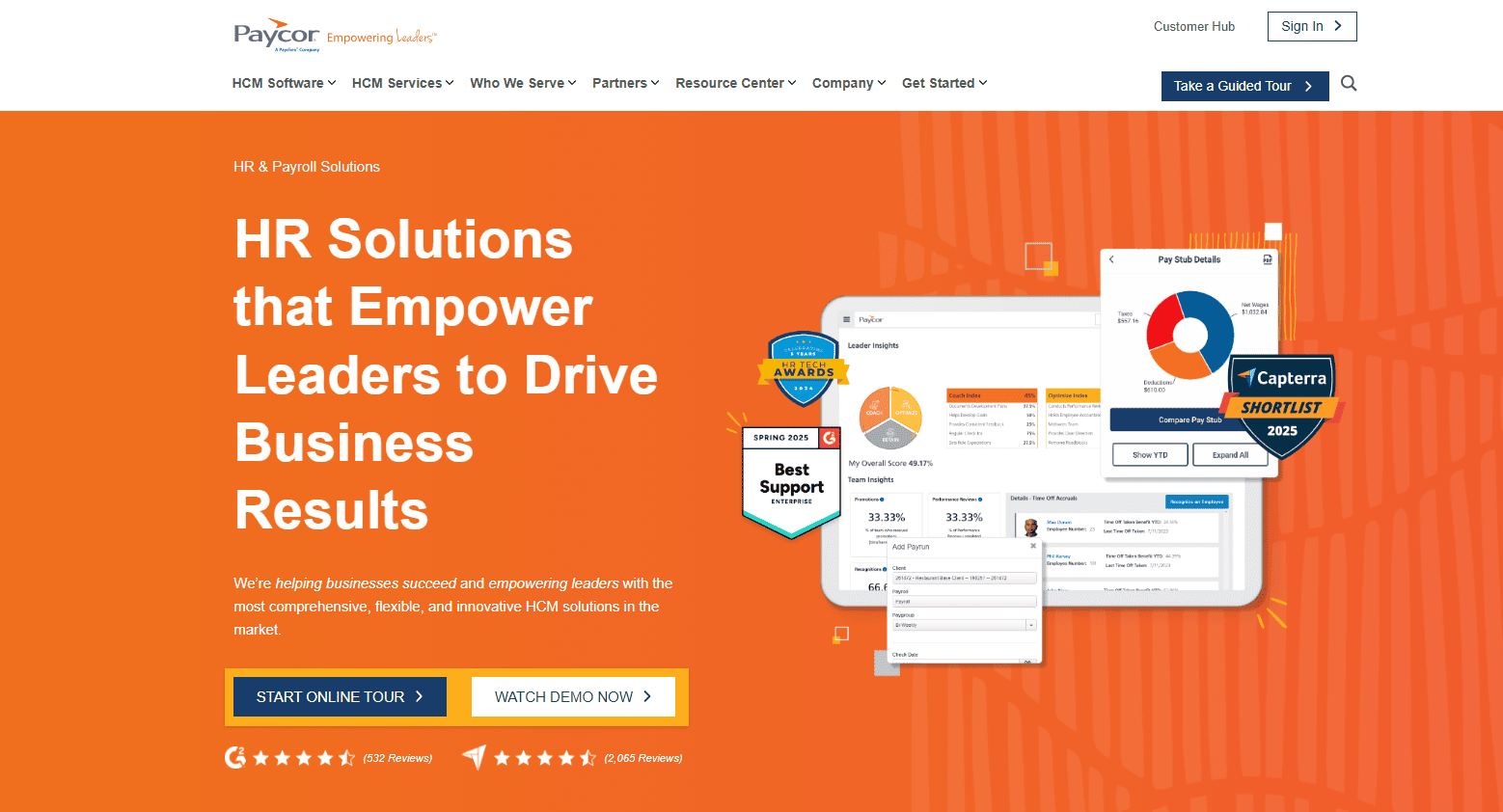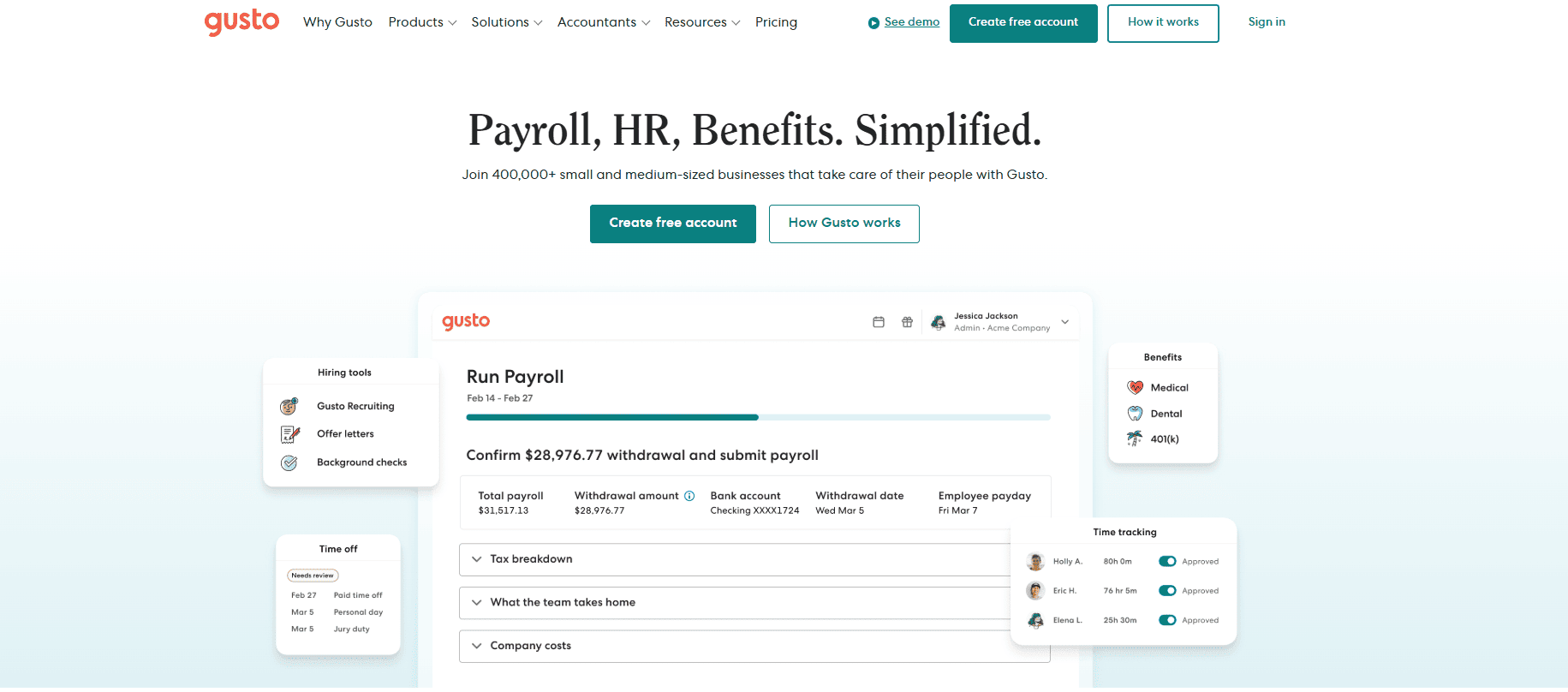Best HR Tools for Compliance Automation (and Why HR Cloud Leads the Pack)
.png)
- Introduction: The Rising Cost of Non-Compliance
- What Is HR Compliance Automation?
- Why Compliance Automation Matters More Than Ever
- Top HR Compliance Tools Compared (2025 Edition)
- Comparison Table: Key Features at a Glance
- Key Features to Look for in an HR Compliance Automation Platform
- HR Cloud: Automating Compliance Without the Chaos
- Case Study: How Osmose Utilities Services Transformed Field-Based Compliance
- Integrating Compliance Automation with Other HR Functions
- ROI and Business Impact of Compliance Automation
- Choosing the Right HR Compliance Tool for Your Organization
- Future Trends in HR Compliance Automation
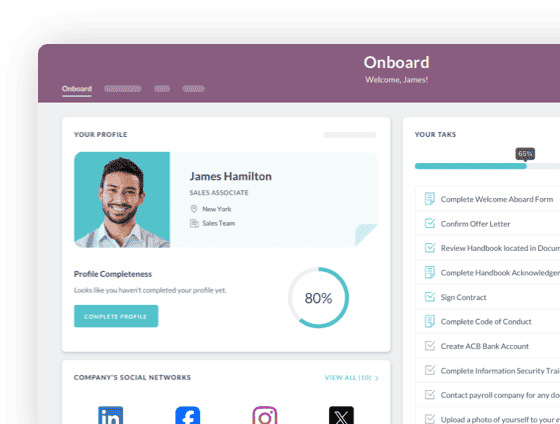
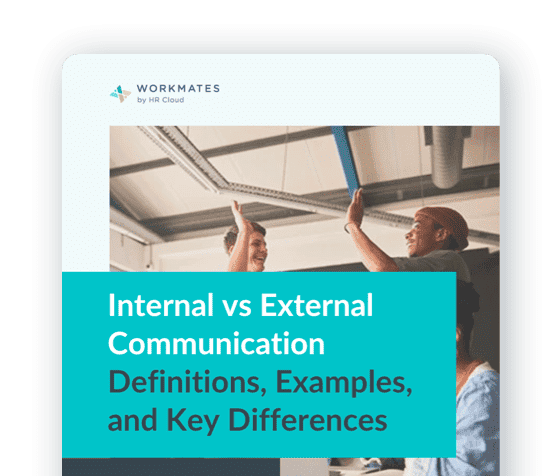
 Cut onboarding time
by 60%—here's the
Ultimate Checklist
that helped do it.
Cut onboarding time
by 60%—here's the
Ultimate Checklist
that helped do it.
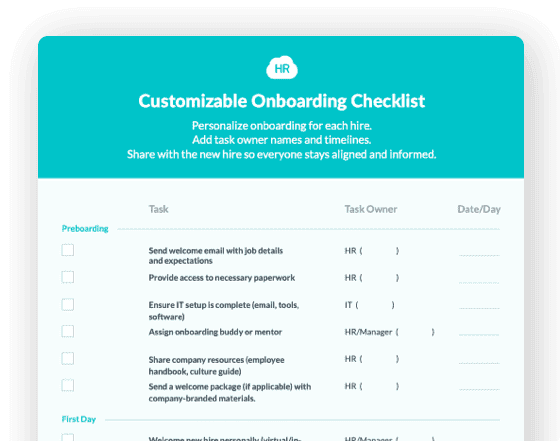
In 2025, HR compliance violations cost organizations an average of $14 million when factoring in fines, lost productivity, and reputation damage. The Department of Labor alone issued over $26 million in fines to employers last year. But here's the thing – smart organizations are turning this challenge into an opportunity. Modern HR compliance automation tools don't just prevent penalties; they create competitive advantages through streamlined operations, enhanced employee experiences, and audit-ready documentation. Companies using automated compliance systems report 80% reduction in payroll processing costs and significantly improved accuracy across HR functions.
Key Takeaways
-
Non-compliance is expensive: Organizations face an average of $14 million in total costs from compliance failures, including fines up to $16,131 per OSHA violation in 2024
-
Technology adoption is accelerating: 55% of companies now use HR tech for compliance – double the percentage from 2023
-
Automation delivers measurable ROI: Organizations report 80% reduction in payroll processing costs and 25% reduction in compliance-related errors through automation
-
Multi-state complexity is growing: With 13 states requiring pay transparency and constantly evolving labor laws, manual compliance tracking is increasingly untenable
-
HR Cloud leads in comprehensive automation: Unlike competitors that require expensive add-ons or complex integrations, HR Cloud provides end-to-end compliance automation as core platform functionality
Introduction: The Rising Cost of Non-Compliance
Picture this: A mid-sized healthcare organization thought they had compliance covered with spreadsheets and manual processes. Then came the audit. Missing I-9 documentation, expired certifications that weren't tracked, and inconsistent policy acknowledgments led to a six-figure penalty that could have been avoided entirely.
This scenario plays out more frequently than you'd think. Employment lawsuits have increased 400% over the last 20 years, with retaliation charges making up nearly half of all EEOC cases. The landscape has become increasingly complex as remote work blurs jurisdictional boundaries and new regulations emerge regularly.
But here's where the story gets interesting. Organizations that embrace HR compliance automation aren't just avoiding penalties – they're transforming their entire HR operation. They're onboarding employees 3x faster, reducing administrative overhead by significant margins, and creating experiences that actually make employees want to stay.
The question isn't whether you need HR compliance automation. It's which solution will give you the biggest competitive advantage while keeping you audit-ready and penalty-free?
What is HR Compliance Automation?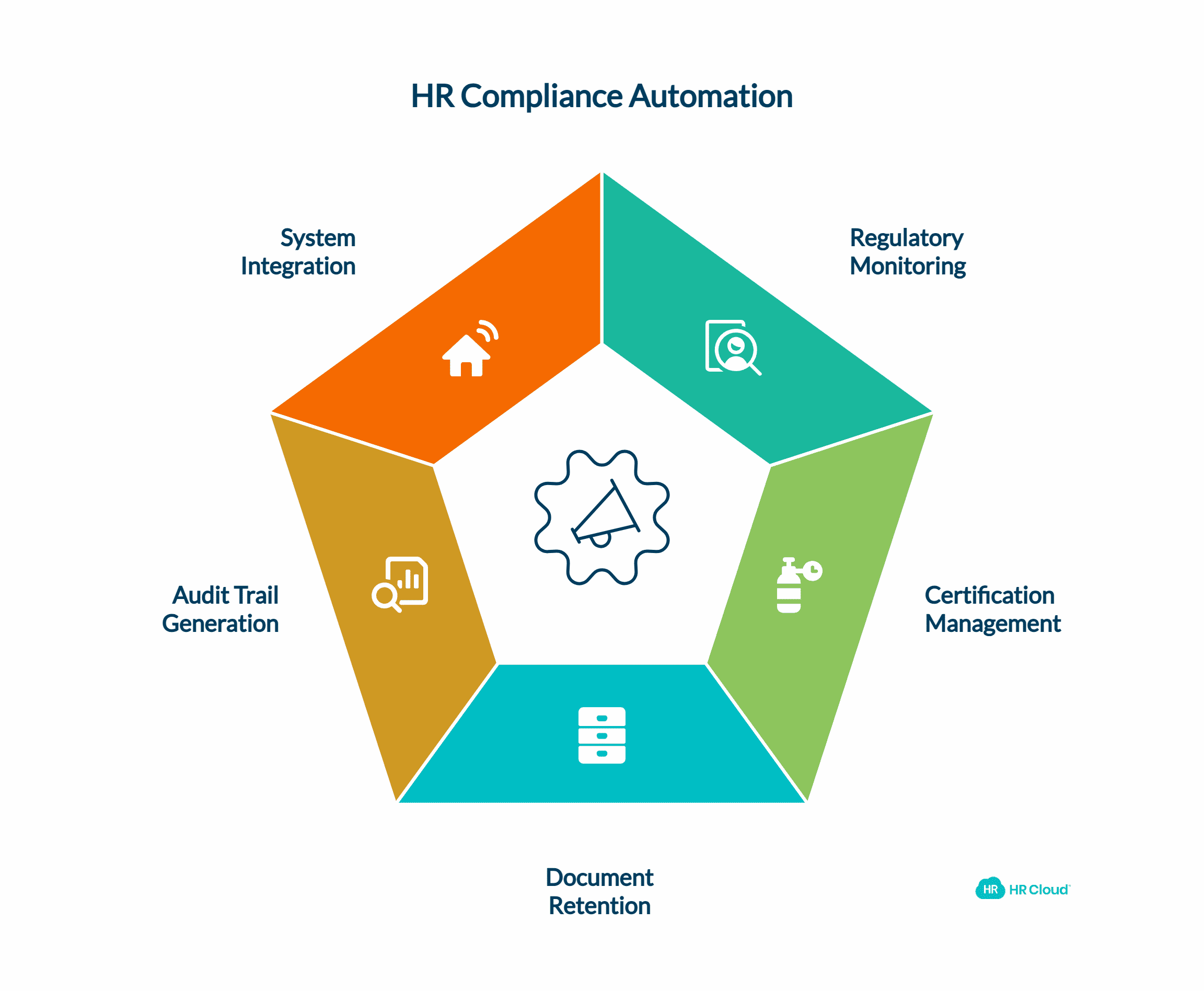
Think of HR compliance automation as your organization's immune system for regulatory requirements. Instead of relying on human memory and manual processes to track everything from FLSA compliance to HIPAA requirements, sophisticated software handles the heavy lifting.
Modern compliance automation platforms monitor regulatory changes across multiple jurisdictions, automatically update policies, track employee certifications, manage document retention schedules, and generate audit trails that would make even the most scrutinizing inspector smile. They integrate with existing HRIS systems, payroll platforms, and learning management systems to create a unified compliance ecosystem.
The magic happens in the details. When a nurse's certification is about to expire, the system doesn't just send a reminder – it escalates to supervisors, tracks completion, and ensures patient safety isn't compromised. When labor laws change in the three states where you operate, policy updates are automatically distributed with acknowledgment tracking and training assignments.
For organizations operating across multiple jurisdictions, automation becomes particularly crucial. Manual tracking of state-specific minimum wage changes, varying overtime rules, and different leave requirements quickly becomes untenable. More than 20 states raised minimum wages in 2024 alone, with eight states now at $15 per hour or higher.
Why Compliance Automation Matters More Than Ever
The compliance landscape has fundamentally shifted. Remote work means employees might live in different states than your headquarters, creating multi-jurisdictional complexities that didn't exist five years ago. The gig economy blurs the line between employees and contractors, requiring careful classification to avoid penalties.
Meanwhile, regulatory scrutiny is intensifying. The Equal Employment Opportunity Commission's 2024-2028 Strategic Enforcement Plan targets algorithmic bias, pay equity, and harassment – areas where automated documentation and consistent processes become your best defense.
Consider the financial impact. FLSA violations can result in fines up to $2,451 per violation for willful violations in 2024, with penalties rising annually. GDPR fines have totaled $3.1 billion since implementation, and even small data privacy violations can result in significant penalties.
Ready to see how HR Cloud can protect your organization from compliance risks while streamlining operations? Schedule a personalized demo to explore automated compliance features designed for your industry.
But compliance automation delivers benefits beyond risk mitigation. Organizations report dramatic improvements in employee satisfaction when onboarding becomes seamless, policy updates are clear and timely, and managers have real-time visibility into team compliance status. The technology transforms compliance from a necessary evil into a competitive advantage.
 Ready to pass your next audit—without the stress? See how you can simplify compliance and eliminate gaps before they become problems.
Ready to pass your next audit—without the stress? See how you can simplify compliance and eliminate gaps before they become problems.
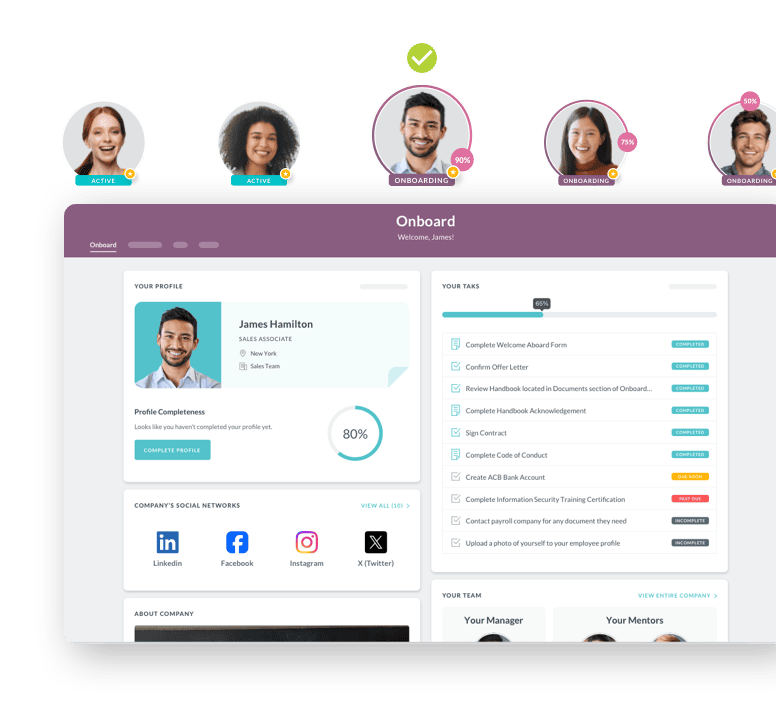
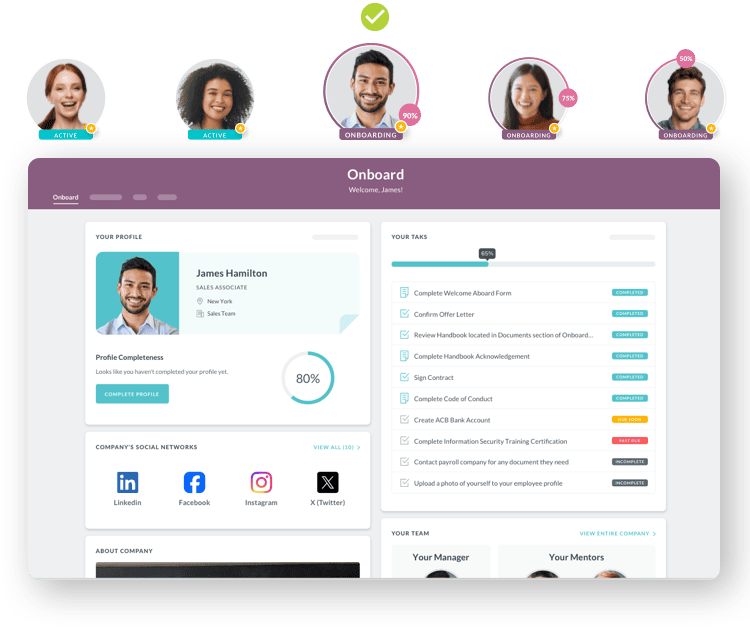
Top HR Compliance Tools Compared (2025 Edition)
HR Cloud: Comprehensive Compliance Without the Complexity
HR Cloud stands out by treating compliance as a core platform capability rather than an afterthought. The system provides end-to-end automation for employee lifecycle management, from automated I-9 and E-Verify processing during onboarding to comprehensive audit trails for offboarding.
Strengths:
-
Native multi-state compliance tracking without expensive add-ons
-
SOC 2 compliant data security with biometric-protected server cages
-
Seamless integration with ADP, UKG, Paylocity, and other major HRIS systems
-
Role-based compliance automation that adapts to different industries
-
Mobile-friendly compliance tools for distributed workforces
Industry-Specific Capabilities:
-
Healthcare: HIPAA compliance features with role-based access controls and comprehensive audit trails
-
Government: Automated veteran preference calculations with complete audit documentation
-
Construction: Safety compliance tools with mobile access for field operations
BambooHR: User-Friendly but Limited Automation
BambooHR offers an intuitive interface that makes it popular with smaller organizations. However, compliance automation capabilities are relatively basic compared to more specialized platforms.
Strengths:
-
Clean, easy-to-use interface
-
Good employee self-service features
-
Decent document management
Limitations:
-
Limited multi-state compliance tracking
-
Basic automation capabilities
-
Requires manual updates for many compliance tasks
Rippling: Broad Suite with Complex Pricing
Rippling provides a comprehensive HR suite that includes compliance features, but the platform's complexity can be overwhelming for organizations primarily focused on compliance automation.
Strengths:
-
Wide range of HR functions in one platform
-
Good integration capabilities
-
Advanced workflow automation
Limitations:
-
Complex pricing structure with many add-ons
-
Steep learning curve
-
Can be overkill for compliance-focused needs
Paycor: Strong Payroll Compliance, Weak Customization
Paycor excels at payroll-related compliance but struggles with broader HR compliance automation and customization capabilities.
Strengths:
-
Excellent payroll compliance features
-
Good tax management
-
Industry-specific templates
Limitations:
-
Limited customization options
-
Weak policy management features
-
Poor integration with non-payroll systems
Gusto: SMB Focus with Enterprise Limitations
Gusto serves small to medium businesses well but lacks the enterprise-grade compliance tools needed for larger organizations or heavily regulated industries.
Strengths:
-
Cost-effective for small businesses
-
Simple setup and use
-
Good benefits administration
Limitations:
-
Limited scalability for larger organizations
-
Basic compliance automation
-
Weak audit trail capabilities
Comparison Table: Key Features at a Glance
|
Platform |
Multi-State Compliance |
Audit Trails |
Industry-Specific Features |
Integration Capabilities |
Implementation Time |
|
HR Cloud |
✅ Native support |
✅ Comprehensive |
✅ Healthcare, Gov, Construction |
✅ Seamless with major platforms |
2-4 weeks |
|
BambooHR |
⚠️ Limited |
⚠️ Basic |
❌ Generic only |
⚠️ Some integrations |
4-6 weeks |
|
Rippling |
✅ Good |
✅ Advanced |
⚠️ Some industry features |
✅ Extensive |
6-12 weeks |
|
Paycor |
✅ Payroll-focused |
⚠️ Limited |
⚠️ Industry templates |
⚠️ Limited scope |
8-12 weeks |
|
Gusto |
❌ Basic |
❌ Minimal |
❌ None |
⚠️ Limited |
2-3 weeks |
Key Features to Look for in an HR Compliance Automation Platform
Policy Management and Version Control
The foundation of any compliance system is robust policy management. Look for platforms that maintain complete version histories, track policy acknowledgments across your entire workforce, and automatically distribute updates based on role or location. HR Cloud's policy management system ensures no employee operates under outdated policies while maintaining complete audit trails.
Effective policy management goes beyond storage. The system should track which employees have acknowledged each policy version, send automated reminders for overdue acknowledgments, and generate reports showing compliance status across departments or locations.
Employee Training and Certification Tracking
Automated training assignment based on role, location, and regulatory requirements separates good platforms from great ones. The system should track completion rates, manage certification renewals, and escalate to supervisors when deadlines approach.
Consider a healthcare organization where different roles require distinct compliance or safety training — some positions may need annual courses, while others require monthly updates. HRCloud can automatically assign the right training to the right employees at the right time, without any manual intervention from HR. While the platform does not provide the training content itself, it can manage these programs under a Business Associate Agreement (BAA), enabling organizations to maintain compliance efficiently and securely.
Real-Time Alerts for Regulatory Changes
Labor laws evolve constantly, and staying current requires more than occasional newsletter subscriptions. Advanced platforms monitor regulatory changes across all jurisdictions where you operate and automatically flag potential impacts on your organization.
When Connecticut expanded its paid leave laws or when new pay transparency requirements took effect, organizations using automated systems were updating policies while their competitors were still reading about the changes.
Automated Audit Logs and E-Signatures
Complete audit trails aren't just nice to have – they're essential for defending against compliance challenges. Every action should be logged with timestamps, user identification, and change details. E-signature capabilities should meet legal standards while providing user-friendly experiences.
Curious about HR Cloud's audit trail capabilities? Request a demo to see how comprehensive logging protects your organization during compliance reviews.
Reporting and Analytics Dashboards
Data visibility transforms reactive compliance into proactive risk management. Dashboards should show completion rates for training and policy acknowledgments, highlight upcoming certification renewals, and identify potential compliance gaps before they become problems.
The best platforms provide role-based dashboards, so executives see high-level compliance metrics while HR managers drill down into specific employee details.
HR Cloud: Automating Compliance Without the Chaos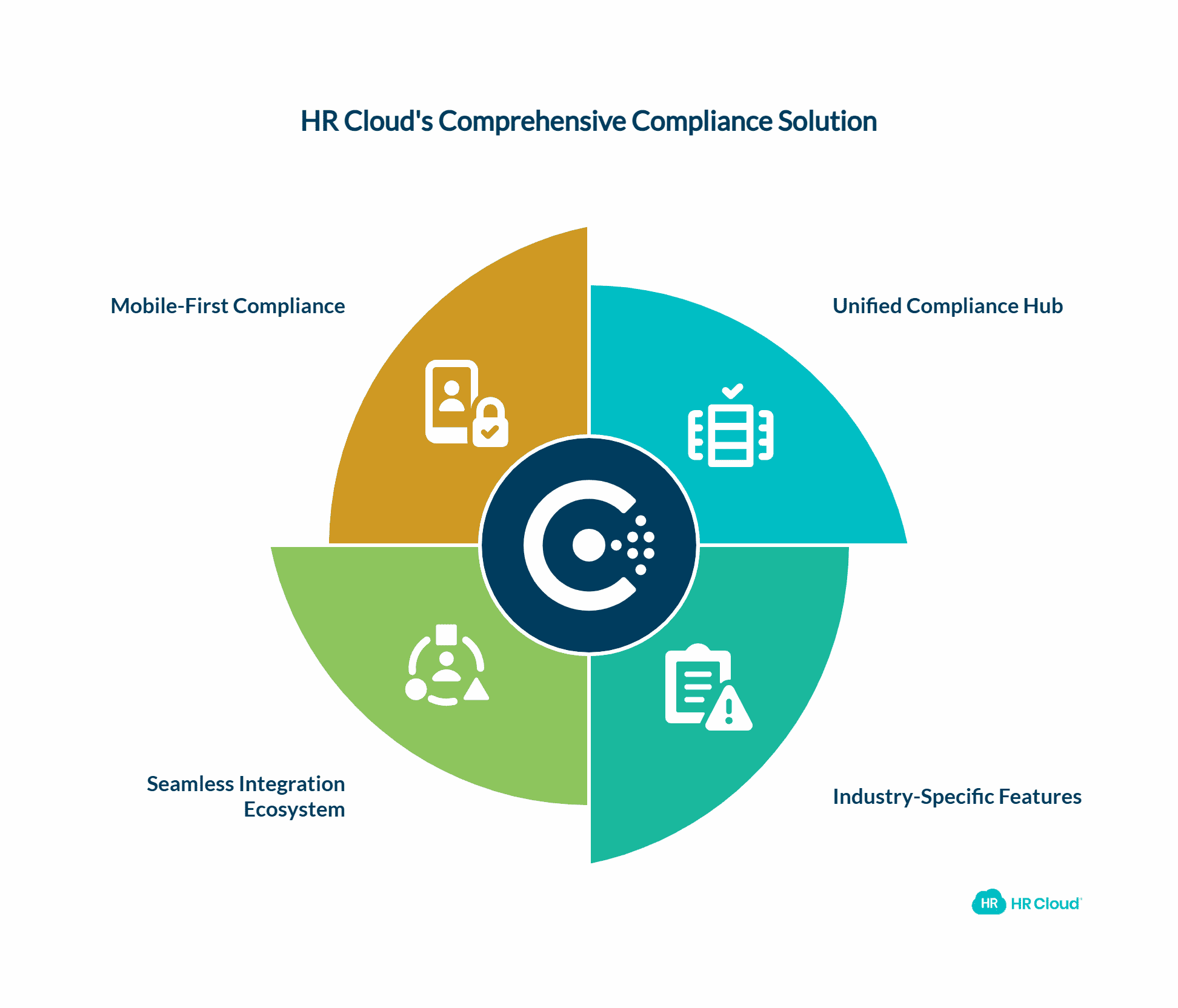
While many HR platforms treat compliance as an afterthought requiring expensive add-ons or complex customizations, HR Cloud was architected specifically for compliance-heavy environments. This foundational difference shows in every aspect of the platform.
Unified Compliance Hub
HR Cloud's approach centers around a unified compliance hub that connects onboarding, document management, training, and reporting. Unlike fragmented systems that require jumping between modules or platforms, everything happens within a cohesive ecosystem designed for audit readiness.
The platform's SmartFlow automation handles complex compliance workflows automatically. When a new hire joins, the system doesn't just collect their I-9 documentation – it verifies completion, stores documents securely, sets appropriate retention schedules, and creates audit trails that satisfy regulatory requirements.
Industry-Specific Compliance Features
Where HRCloud truly differentiates itself is in industry-specific compliance capabilities. Healthcare organizations can leverage BAA-supported role-based access controls, automated license tracking, and Joint Commission-ready documentation. Government agencies benefit from automated veteran preference calculations and specialized audit requirements.
Construction companies can track safety certifications, manage jobsite compliance, and handle the unique challenges of mobile workforces. Each industry gets purpose-built features rather than generic tools that require extensive customization.
Seamless Integration Ecosystem
Integration capabilities make or break compliance and HR automation success. HRCloud offers native integrations with major HRIS platforms such as ADP Workforce Now, Workday, Oracle HCM, and UKG, ensuring seamless data flow across systems. Payroll, benefits, and time-tracking data sync automatically, eliminating duplicate entry and reducing errors. The platform also connects with learning management systems, performance tools, and compliance modules, allowing organizations to manage HR processes, training, and reporting from a single, unified ecosystem.
The platform connects with identity management systems, payroll providers, learning management systems, and background check services to create a comprehensive compliance ecosystem. When an employee's status changes in your HRIS, permissions and access levels update automatically across all connected systems.
Mobile-First Compliance
Modern workforces demand mobile accessibility, and compliance requirements don't pause when employees leave the office. HR Cloud's mobile-optimized interface allows secure document signing, policy acknowledgment, and training completion from any device while maintaining full security and audit capabilities.
For organizations with distributed workforces, this mobile capability transforms compliance from a location-dependent challenge into a seamless, always-available process.
Case Study: How Osmose Utilities Services Transformed Field-Based Compliance
Osmose Utilities Services, Inc., a company specializing in utility structure inspection and rehabilitation, faced significant compliance challenges with their field-based workforce. The company needed to maintain strict adherence to I-9, E-Verify, and industry-specific safety requirements while onboarding employees across multiple remote locations.
The Challenge
Osmose's unique operational requirements created complex compliance scenarios. With a high number of field-based employees working across different states and locations, the HR team had to manage onboarding and compliance verification outside traditional office environments.
The manual onboarding process was time-intensive, taking up to two hours per new hire, and frequently resulted in data entry errors that required additional correction time. Most critically, this approach raised serious compliance concerns about consistently meeting deadlines and security requirements for I-9 and E-Verify documentation, as well as industry-specific regulatory obligations.
Field-based operations meant traditional paper-based compliance tracking was practically impossible to maintain consistently. The company needed a solution that could ensure regulatory compliance while accommodating their distributed workforce model.
The Solution
HR Cloud's Onboard solution provided comprehensive automation for Osmose's entire field onboarding and compliance approach. The platform's mobile-optimized interface allowed secure document collection and verification from any location, while maintaining full audit trails and regulatory compliance.
The system automated I-9 and E-Verify processes, ensuring consistent completion regardless of where employees were located. Compliance documentation was captured digitally with e-signature capabilities, eliminating the risk of lost paperwork or incomplete files.
The Results
According to Kaylee Collins, HR Analyst at Osmose Utilities Services, the transformation was comprehensive:
 — Kaylee Collins, HR Analyst
— Kaylee Collins, HR Analyst

All of this has helped us improve compliance and gives us a powerful tool to achieve even more results in the future."
Key improvements included:
-
Dramatic time savings: Reduced onboarding time per employee while maintaining compliance standards
-
Enhanced data accuracy: Eliminated manual data entry errors through automated processes
-
Improved compliance posture: Consistent I-9, E-Verify, and industry-specific requirement adherence across all locations
-
Better monitoring capabilities: Real-time visibility into compliance status for field-based employees
-
Reduced administrative burden: HR staff could focus on strategic initiatives rather than compliance paperwork
Ready to achieve similar compliance improvements for your organization? Schedule a demo to see how HR Cloud can streamline your field-based or distributed workforce compliance challenges.
The implementation enabled Osmose to maintain their high service standards while ensuring consistent regulatory compliance across their entire distributed workforce, proving that even complex field-based operations can achieve compliance automation success.
Integrating Compliance Automation with Other HR Functions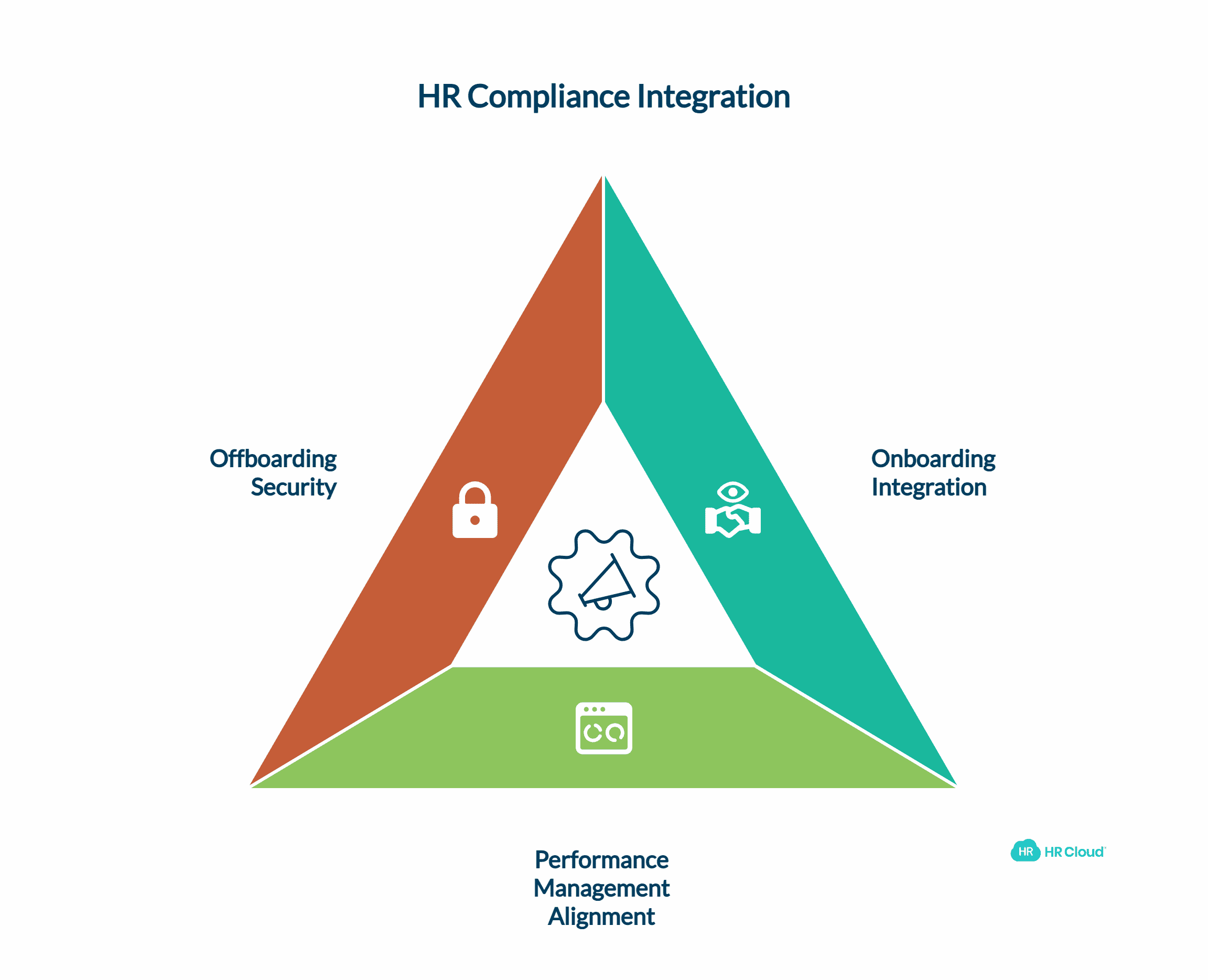
Effective compliance automation doesn't operate in isolation – it weaves throughout every HR function to create seamless employee experiences while maintaining regulatory requirements.
Onboarding Integration
Modern onboarding platforms treat compliance as a natural part of the new hire experience rather than a separate burden. HR Cloud's onboarding workflows automatically incorporate role-specific compliance requirements, from I-9 completion to industry-specific training assignments.
New healthcare employees might complete HIPAA training, safety protocols, and license verification as part of their welcome experience. Construction workers get safety training and certification tracking. Government employees navigate security clearance requirements and ethics training seamlessly.
Performance Management Alignment
Compliance training completion and policy adherence should integrate with performance management systems. Managers need visibility into team compliance status, and employees should understand how regulatory requirements connect to their role success.
Advanced platforms tie compliance metrics to performance dashboards, making regulatory adherence part of ongoing professional development rather than an annual burden.
Offboarding Security
Employee departures create significant compliance risks if not handled systematically. Automated offboarding workflows ensure access revocation, equipment recovery, and document retention happen consistently across all departures.
HR Cloud's offboarding automation creates audit trails for every departure, ensuring no access permissions linger and all required documentation is completed before final separation.
ROI and Business Impact of Compliance Automation
Quantifiable Cost Savings
Organizations implementing comprehensive compliance automation report measurable financial benefits beyond penalty avoidance. The American Payroll Association estimates that HR automation cuts payroll processing costs by 80% while reducing errors significantly.
Consider the time savings alone. If HR staff spends 20 hours per week on compliance-related tasks, automation can reduce this to 4-5 hours while improving accuracy and completeness. For a team of three HR professionals, this represents 45-48 hours per week redirected to strategic initiatives.
Risk Mitigation Value
The value of avoided penalties often dwarfs the cost of automation platforms. OSHA violations can cost up to $16,131 per incident, while wage and hour violations frequently result in back pay, liquidated damages, and civil penalties. A single misclassification error can cost hundreds of thousands in back taxes and penalties.
Beyond direct financial penalties, compliance failures damage employer brands and complicate talent acquisition. 41% of consumers would stop purchasing from organizations known to mistreat workers, and top talent increasingly evaluates potential employers' compliance records.
Operational Efficiency Gains
Automation transforms HR from an administrative cost center into a strategic business partner. When compliance happens automatically, HR professionals can focus on culture development, talent strategy, and employee engagement initiatives that drive business results.
Managers gain real-time visibility into team compliance status, enabling proactive management rather than reactive crisis response. Employee satisfaction improves when compliance requirements are clear, accessible, and integrated into positive workplace experiences.
Ready to calculate your organization's compliance automation ROI? Schedule a consultation to explore potential cost savings and efficiency gains specific to your industry and size.
Choosing the Right HR Compliance Tool for Your Organization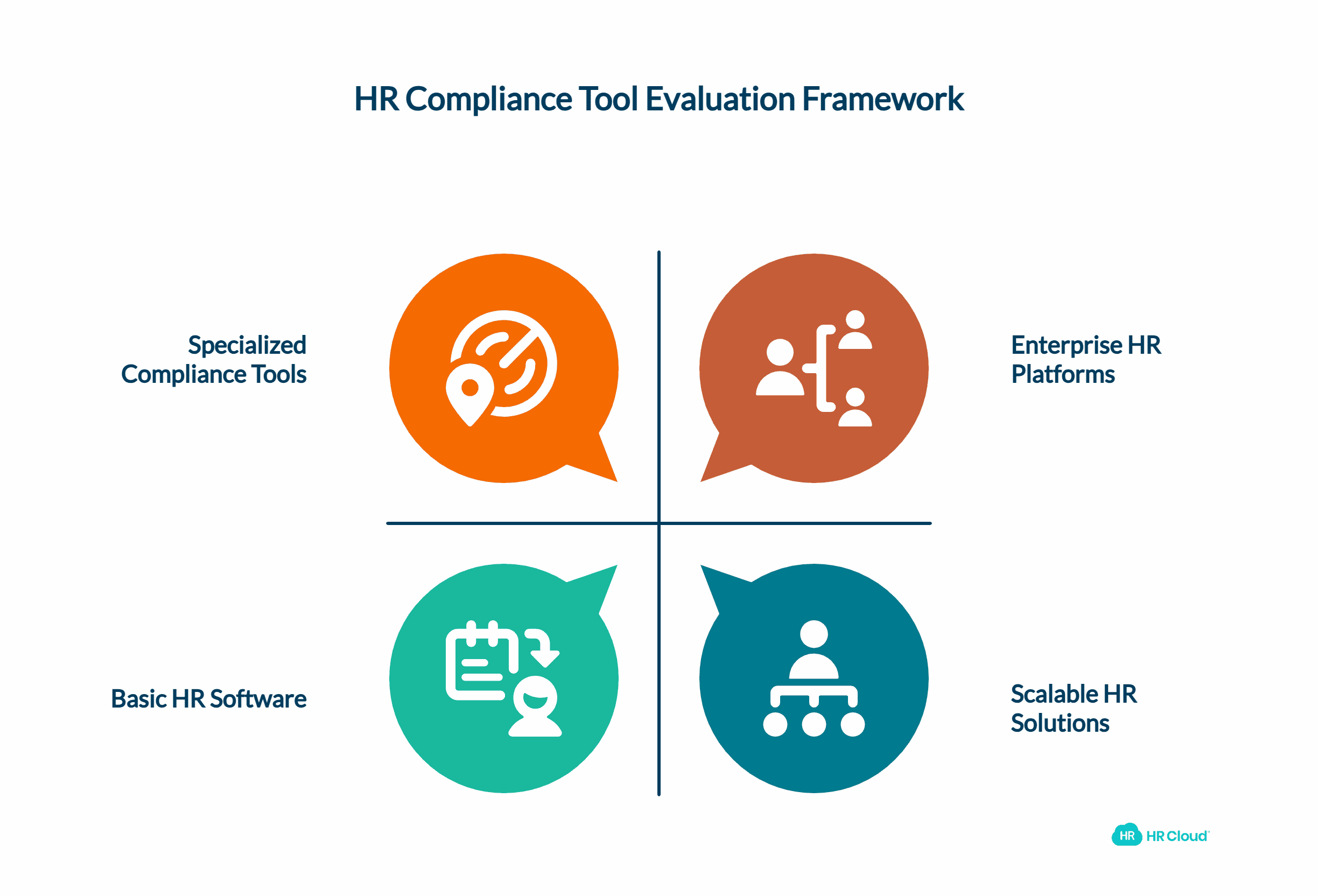
Assessment Framework
Start with a comprehensive audit of your current compliance requirements and pain points. Document existing workflows, identify inefficiencies, and catalog integration requirements with legacy systems. Define success metrics that matter to stakeholders and establish change management strategies for user adoption.
Consider your organization's unique factors:
-
Industry regulations: Healthcare, finance, and government have specialized requirements
-
Geographic spread: Multi-state operations require sophisticated compliance tracking
-
Workforce composition: Remote employees, contractors, and seasonal workers create different challenges
-
Growth trajectory: Your solution should scale with organizational expansion
Evaluation Criteria
Focus on outcomes rather than features when evaluating vendors. Look for reference customers in similar settings, proven implementation methodologies, and comprehensive training programs.
Key technical requirements include:
-
Native multi-jurisdictional compliance support
-
Comprehensive audit trail capabilities
-
Role-based access controls and data security
-
Integration with existing HRIS and payroll systems
-
Mobile accessibility for distributed workforces
Implementation Considerations
Successful implementations require executive sponsorship, dedicated project management, and phased rollout strategies. Plan for change management, user training, and ongoing optimization.
HR Cloud's streamlined implementation typically completes within 2-4 weeks for most organizations, compared to 12-24 month deployments common with enterprise platforms. This rapid time-to-value reduces implementation risk while delivering immediate benefits.
Future Trends in HR Compliance Automation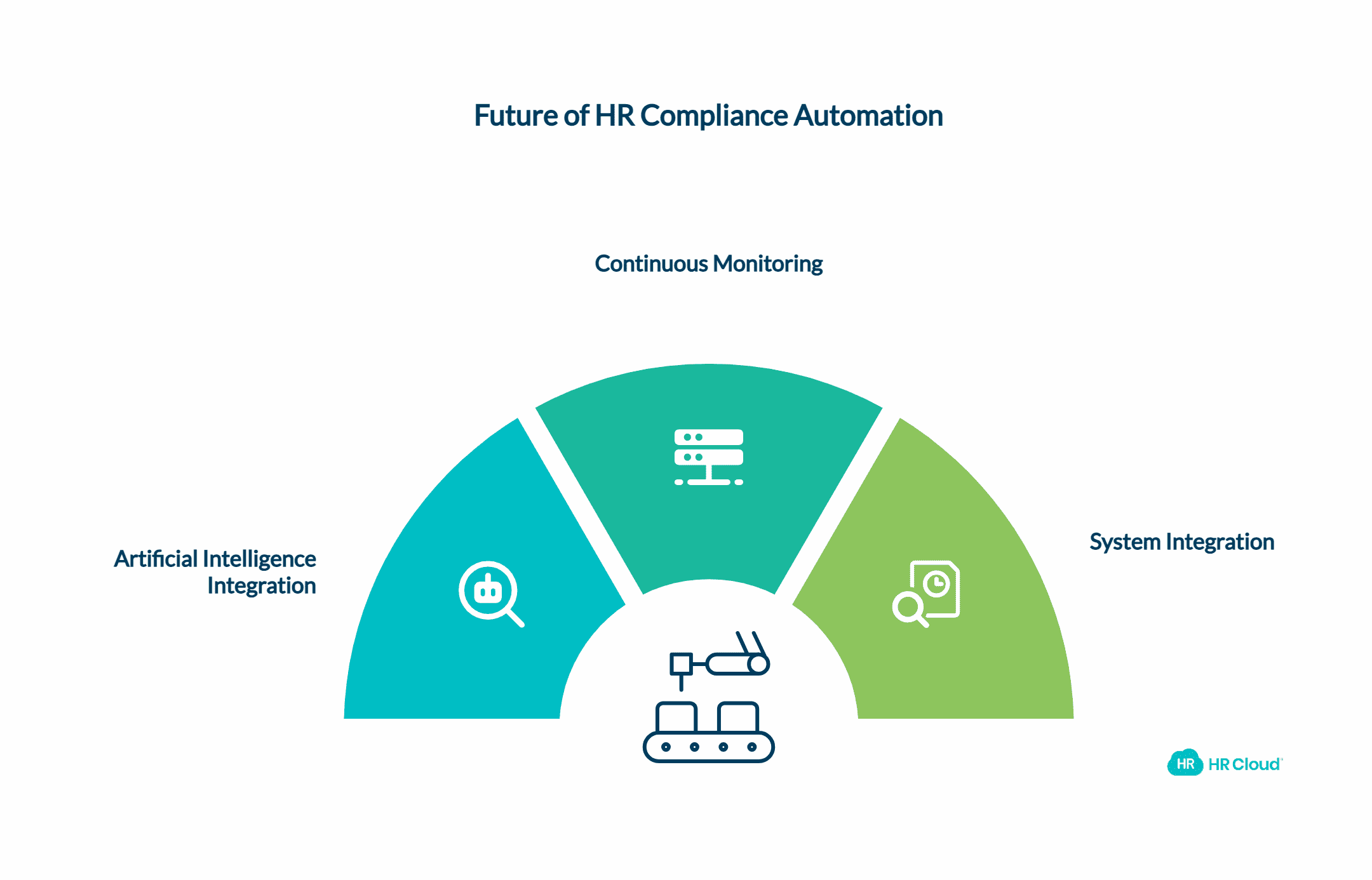
Artificial Intelligence Integration
AI-powered compliance tools are moving beyond basic automation to predictive analytics and intelligent decision support. Future platforms will identify compliance risks before they materialize, suggest policy updates based on regulatory changes, and provide personalized compliance guidance for individual employees.
Machine learning algorithms will analyze patterns in compliance violations, helping organizations identify and address root causes rather than treating symptoms. Natural language processing will make regulatory updates more accessible by translating complex legal language into actionable guidance.
Continuous Monitoring and Real-Time Adaptation
The shift toward continuous monitoring reflects the reality of rapid regulatory change. Instead of annual compliance reviews, organizations need systems that monitor compliance status continuously and adapt automatically to new requirements.
Real-time adaptation capabilities will enable organizations to respond to regulatory changes within days rather than months, maintaining competitive advantages while avoiding penalty risks.
Integration with Broader Business Systems
Compliance automation will integrate more deeply with enterprise resource planning, customer relationship management, and business intelligence systems. This integration will provide holistic views of how compliance affects business outcomes and customer relationships.
Stay ahead of compliance trends with HR Cloud's continuously evolving platform. Request a demo to see how cutting-edge features can future-proof your compliance strategy.
Conclusion: Compliance Shouldn't Be a Headache
The compliance landscape will only grow more complex as remote work becomes permanent, regulations multiply, and penalty enforcement intensifies. Organizations that wait to implement automated compliance solutions will find themselves increasingly disadvantaged compared to competitors who embrace these tools proactively.
HR Cloud's comprehensive approach to compliance automation delivers immediate value while providing the scalability and flexibility needed for future growth. The platform's industry-specific features, seamless integrations, and user-friendly design create competitive advantages that extend far beyond penalty avoidance.
Smart organizations understand that compliance automation isn't just about avoiding fines – it's about creating operational excellence, enhancing employee experiences, and building sustainable competitive advantages. In an era where talent is scarce and regulatory scrutiny is intense, these capabilities become essential for long-term success.
Don't let compliance challenges hold your organization back. Transform regulatory requirements from obstacles into opportunities with comprehensive automation that keeps you audit-ready, penalty-free, and competitively positioned for whatever regulatory changes come next.
Ready to transform your compliance operations? Schedule a personalized demo to see how HR Cloud can automate your compliance challenges while enhancing employee experiences and operational efficiency.
 Discover how our HR solutions streamline onboarding, boost employee engagement, and simplify HR management
Discover how our HR solutions streamline onboarding, boost employee engagement, and simplify HR management
Frequently Asked Questions
What is HR compliance automation?
HR compliance automation uses software to manage regulatory requirements automatically, including policy distribution, training assignments, document retention, and audit trail creation. It reduces manual work while improving the accuracy and completeness of compliance activities.
How do HR compliance tools reduce audit risks?
Automated systems maintain comprehensive audit trails, ensure consistent policy acknowledgments, track training completion, and generate real-time compliance reports. This documentation provides clear evidence of regulatory adherence during audits or investigations.
Which HR software automates compliance tracking?
Several platforms offer compliance automation, but HR Cloud provides the most comprehensive approach with native multi-state support, industry-specific features, and seamless integration capabilities. Unlike competitors requiring expensive add-ons, HR Cloud treats compliance as core functionality.
How much does HR compliance automation cost?
Costs vary based on organization size, industry requirements, and platform sophistication. However, the ROI typically justifies investment within months through reduced administrative time, avoided penalties, and improved operational efficiency. HR Cloud offers competitive pricing with transparent cost structures.
Can compliance automation handle multi-state operations?
Advanced platforms like HR Cloud provide native multi-state compliance tracking, automatically updating policies and procedures based on jurisdiction-specific requirements. This eliminates the complexity and cost of managing separate systems for different locations.
What industries benefit most from compliance automation?
Healthcare, finance, government, construction, and education see the greatest benefits due to heavy regulatory requirements. However, any organization with employees in multiple states or complex compliance obligations can benefit significantly from automation.
How long does implementation typically take?
Implementation timelines vary by platform complexity and organizational readiness. HR Cloud's streamlined approach typically completes within 2-4 weeks, while enterprise platforms may require 12-24 months. Phased implementations can deliver value incrementally while reducing risk.
Does compliance automation replace HR professionals?
No, automation enhances HR capabilities rather than replacing professionals. It eliminates tedious administrative tasks, allowing HR teams to focus on strategic initiatives like culture development, talent management, and employee engagement that drive business results.

Keep Reading
Best HR Tools for Compliance Automation (and Why HR Cloud Leads the Pack)
The Compliance Catch-Up: What HR Needs to Fix Before Mid-Year Audits
By May, most HR teams have settled into the rhythm of the year. But compliance? That
Secure Onboarding: Best Practices for Protecting Data with Remote Hires
The option of working from home has made remote employees an essential aspect of many
Like What You Hear?
We'd love to chat with you more about how HR Cloud® can support your business's HR needs. Book Your Free Demo

Build a Culture of Recognition. Boost Engagement. Guaranteed.
Workmates empowers employees to stay informed, connected, and appreciated—whether they’re on the front line, in the office, or remote. Recognition drives 12x higher engagement.Trusted by industry leaders in every sector




Cut Onboarding Costs by 60%.
Take the confusion and follow-ups out of onboarding with automated workflows, digital forms, and structured portals—so new hires ramp faster 3X quicker.Trusted by industry leaders in every sector




